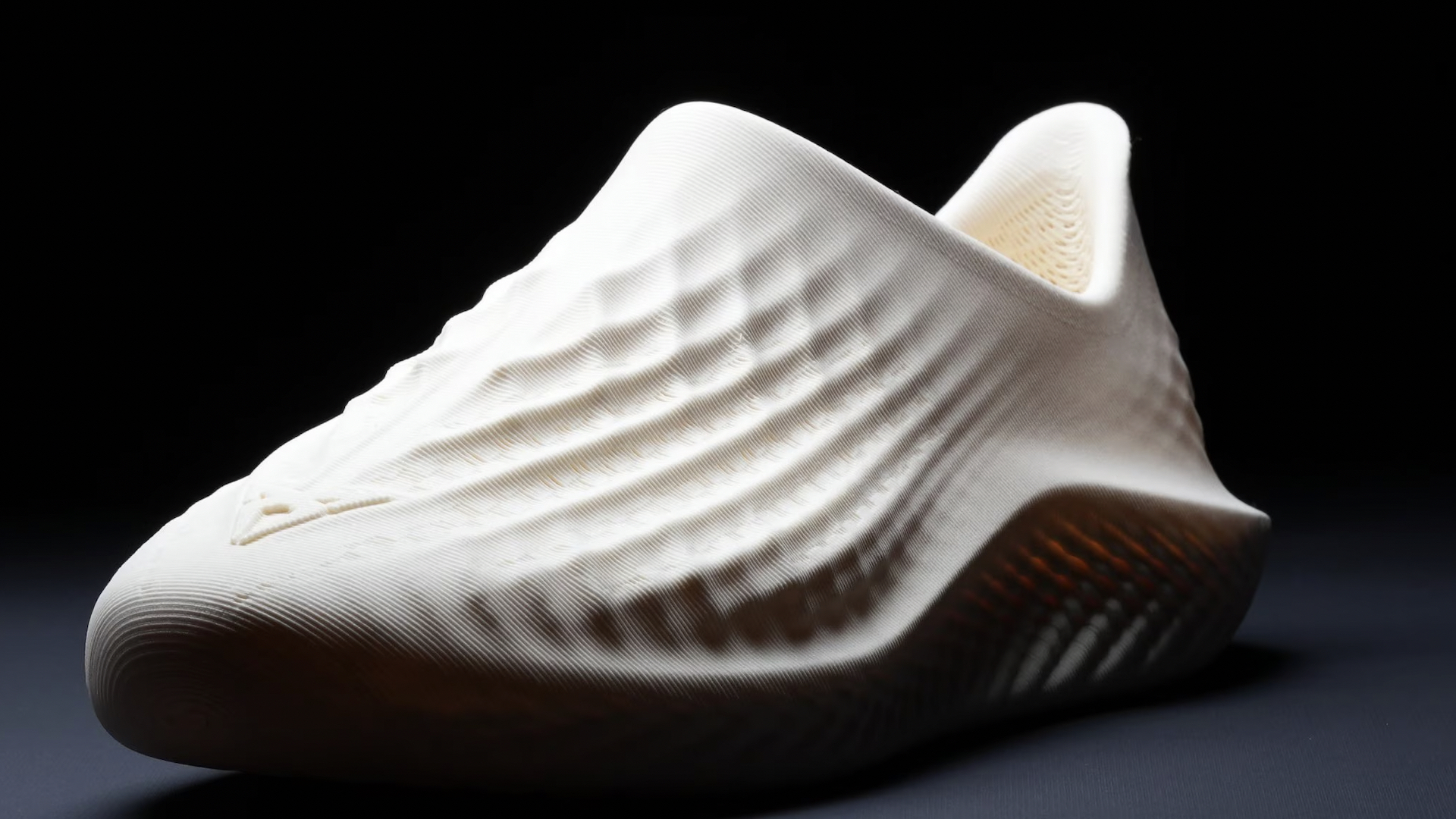41 famous buildings you should visit before you die
A virtual tour of the world's most famous buildings to inspire creative ideas (and travel plans).

The world's most famous buildings can be great places to find creative inspiration. From historic marvels like the Forbidden City in Beijing to modern landmarks such as the Guggenheim in Bilbao, the world is full of iconic structures that can provide ideas for all manner of design projects.
The year 2024 will see the completion of several major new architectural landmarks which are sure to join the ranks of the most famous buildings, and in the list below, we've included some of these newcomers too. Visiting or just studying these buildings, we can learn about a country's culture, history and design. If you're drawing up a travel wish list, you might also want one of the best cameras or to take on some sketching tips to capture what you see.
41 incredible famous buildings for creative inspiration
01. Palace of Versailles, France
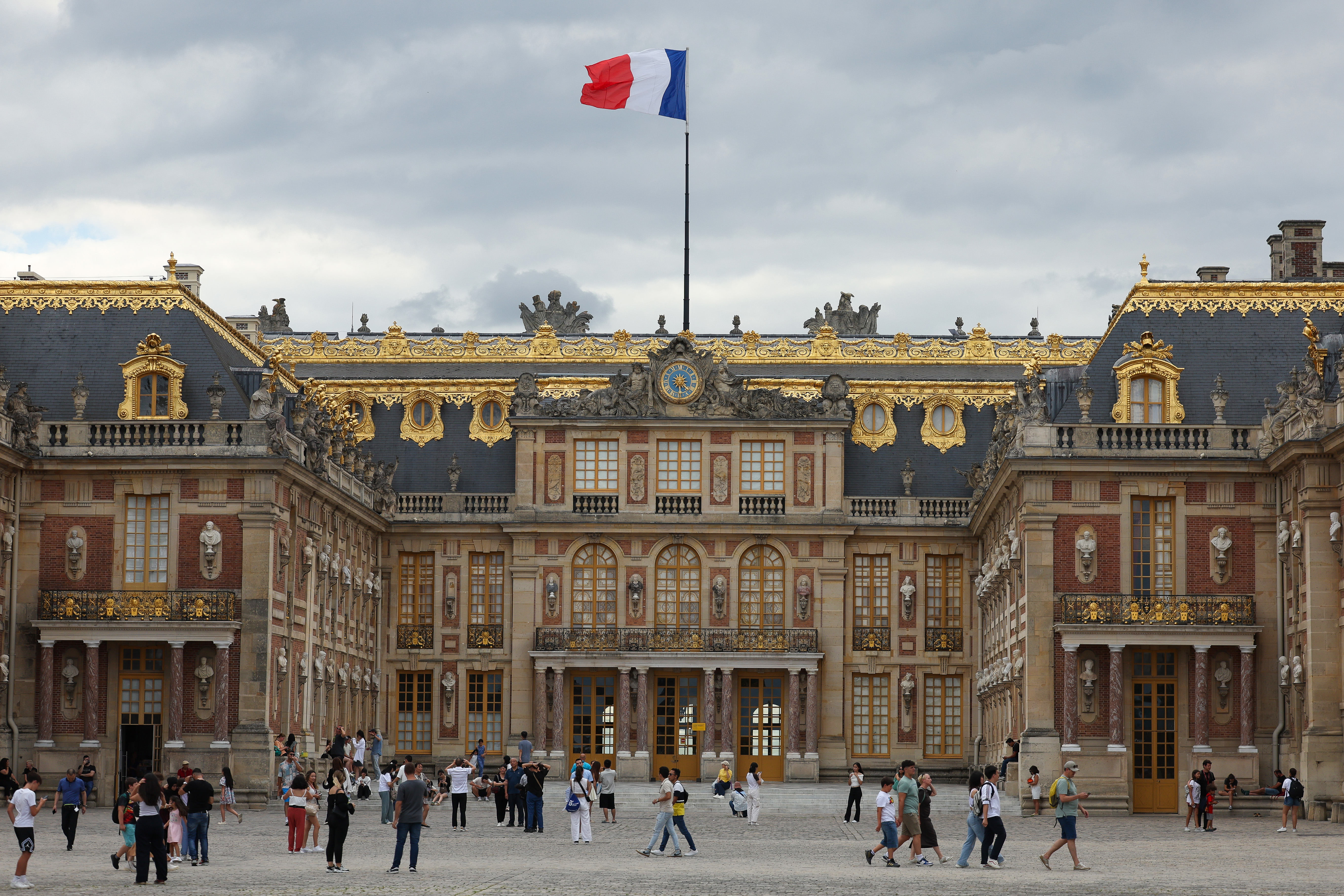
If you're a history buff, the Palace of Versailles is a must-see to add to your bucket list. A former royal residence, the castle was the former hunting lodge and private retreat of Louis XIII who reigned between 1643–1715. More recently it's become a hub for the Paris 2024 Olympic Games, hosting equestrian and modern pentathlon sports.
A stunning showcase of French architecture, the palace is a multifaceted beacon of history. From its triumphant exterior to its stunning grounds, there's a regal elegance to be found throughout. Highlights include the famous Hall of Mirrors adorned with extravagant chandeliers and the intricate Latona Fountain designed by André Le Nôtre. The Palace of Versailles now functions as a museum, inviting guests to explore its rich heritage.
02. The Jeddah Tower
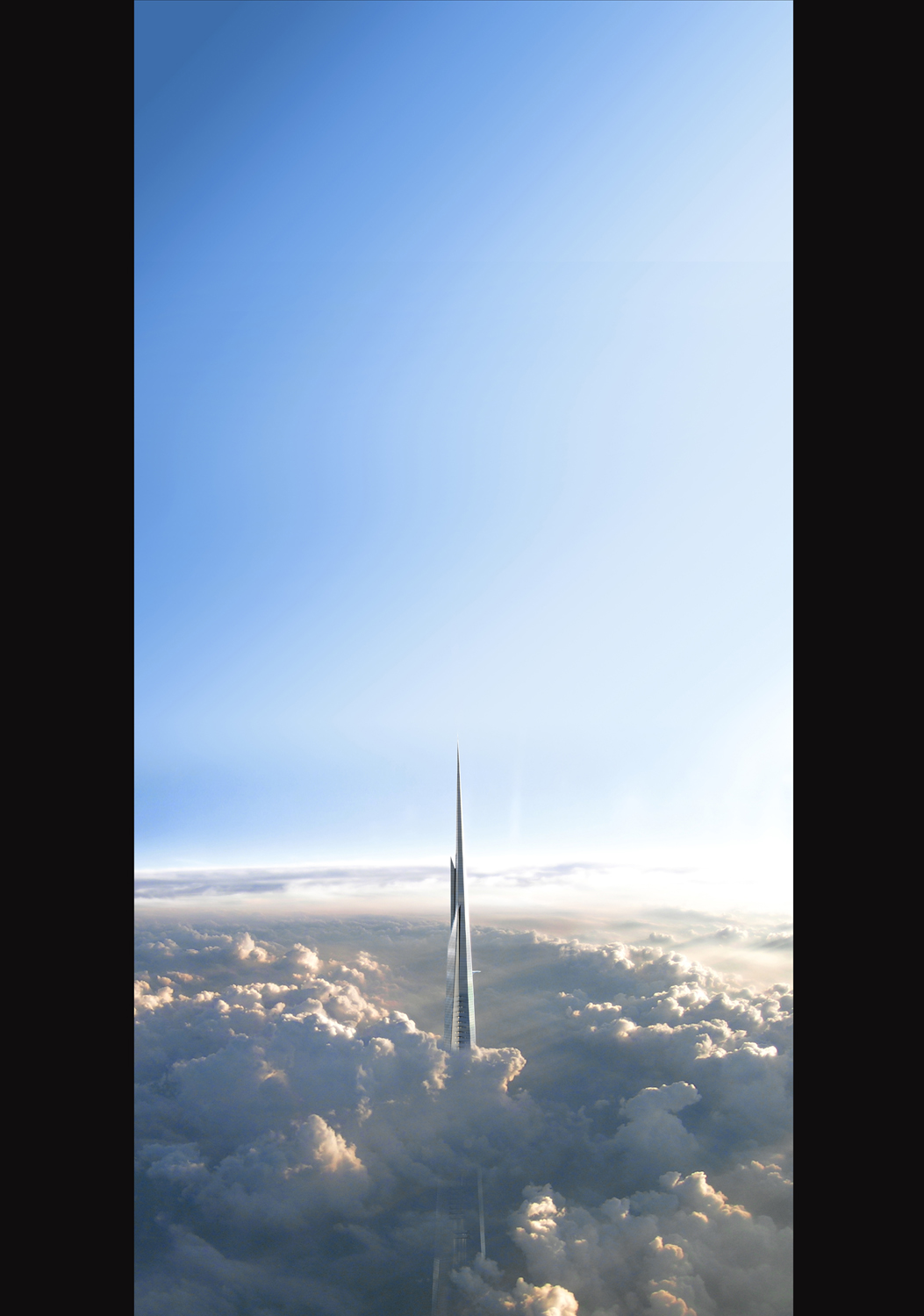
So you can't actually visit the Jeddah Tower yet because it's not complete, but this guide is titled famous buildings to see before you die, so we'll start with a long-term suggestion. The Jeddah Tower is almost guaranteed to become one of the world's most famous buildings when it's completed if only for the fact that it will become the tallest (until the next one).
The tower in Saudi Arabia will be the world's first to reach over a kilometre in height, overshadowing the UAE’s Burj Khalifa by 172 metres. It's intended to be the centerpiece of the Jeddah Economic City (JEC) development. Chicago's Adrian Smith + Gordon Gill Architecture is the lead architect, and the design was inspired by the concept of the "folded fronds of young desert plant growth".
Work resumed in September after being held up due to the Covid-19 pandemic but there is still no scheduled date for completion. The tower will house a Four Season hotel, apartments, offices condominiums and the world’s highest observatory.
Get the Creative Bloq Newsletter
Daily design news, reviews, how-tos and more, as picked by the editors.
03. RAIM (Robot & Artificial Intelligence Museum), Seoul
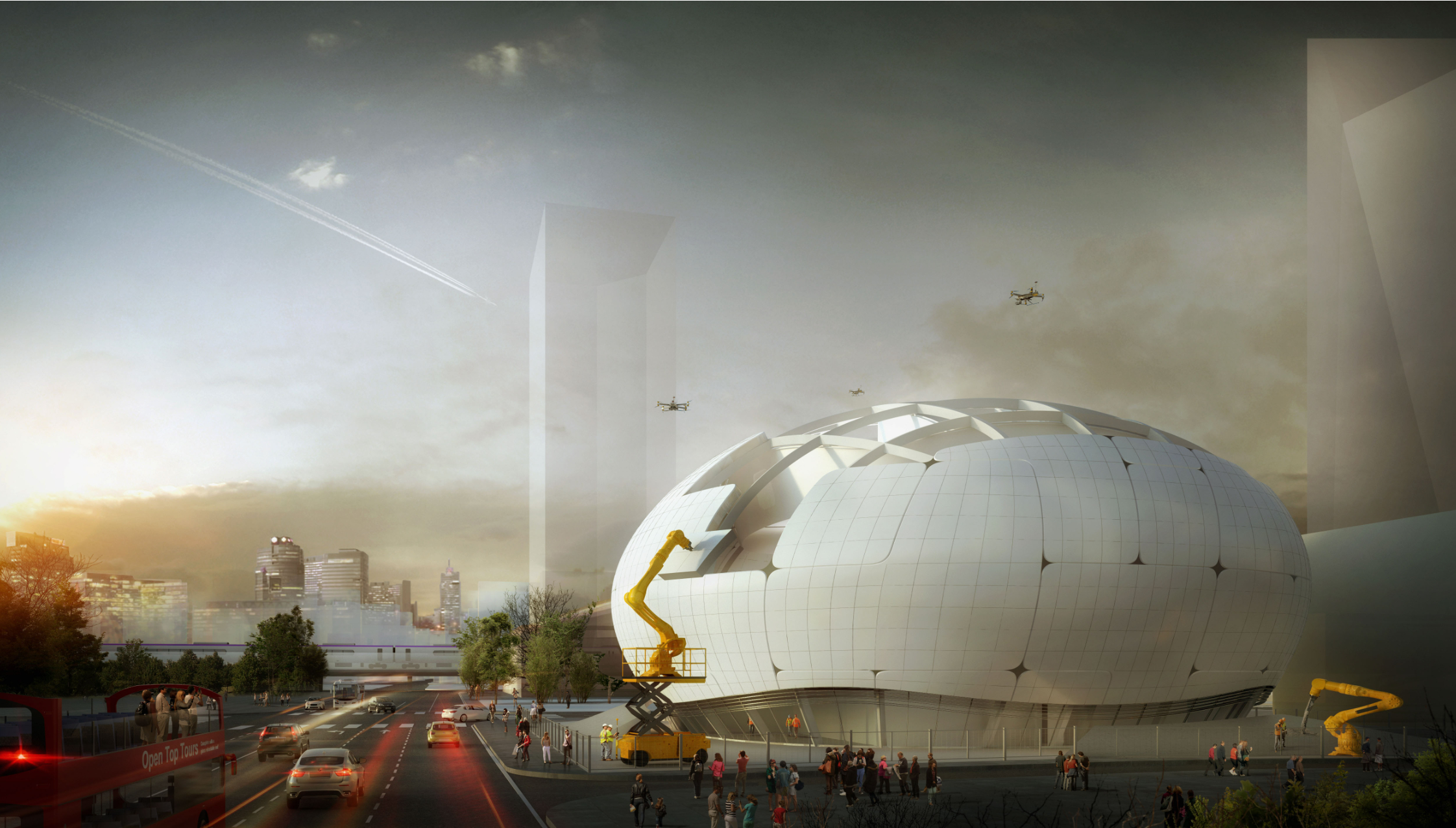
Opening in 2024, the Robot & AI Museum (RAIM) in Seoul is set to be very much a museum of its age, focusing on two rapidly evolving areas of technology that are expected to shape the near future. Designed by Melike Altinisik Architects, the building itself has a striking design, looking like a giant egg. What's inside the museum when it opens in the second half of the year is likely to be just as intriguing, but the museum's construction has been an exhibition in itself, with robots assembling the external metal panels and 3D printing concrete components.
04. Beijing Daxing International Airport
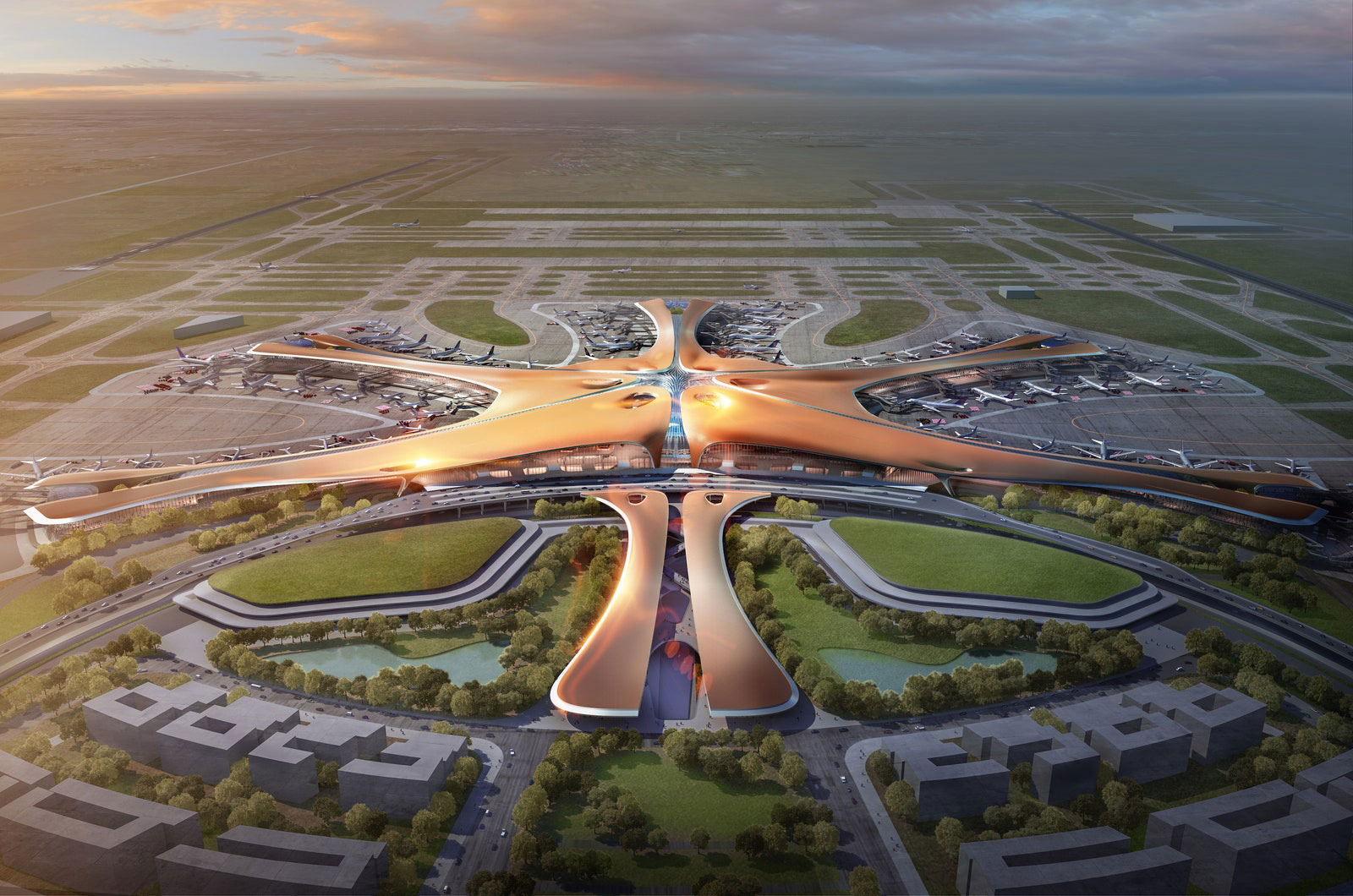
A relatively new construction, Beijing's second international airport replaced Istanbul as the world's largest when it was completed in 2019. Known as 'the starfish', it's sprawling star shape spans 7.5 million square feet. Designed by Zaha Hadid Architects before Hadid's death, it not only looks incredible, but it's uber-practical as well, with an innovative layout designed to make things easier for travellers. This is building design that's both functional and stunning to behold.
05. Guggenheim Museum Bilbao
Designed by Frank Gehry, the Guggenheim Bilbao Museum was completed in 1997. It's a mass of smooth curved lines and glittering tiles. The museum is crossed at one end by a bridge, which is crowned by a large skylight in the shape of a metal flower. The design is so complex that Gehry used advanced software originally conceived for the aerospace industry to work on the design. You can learn more about the building's architecture here.
06. Sagrada Familia, Barcelona
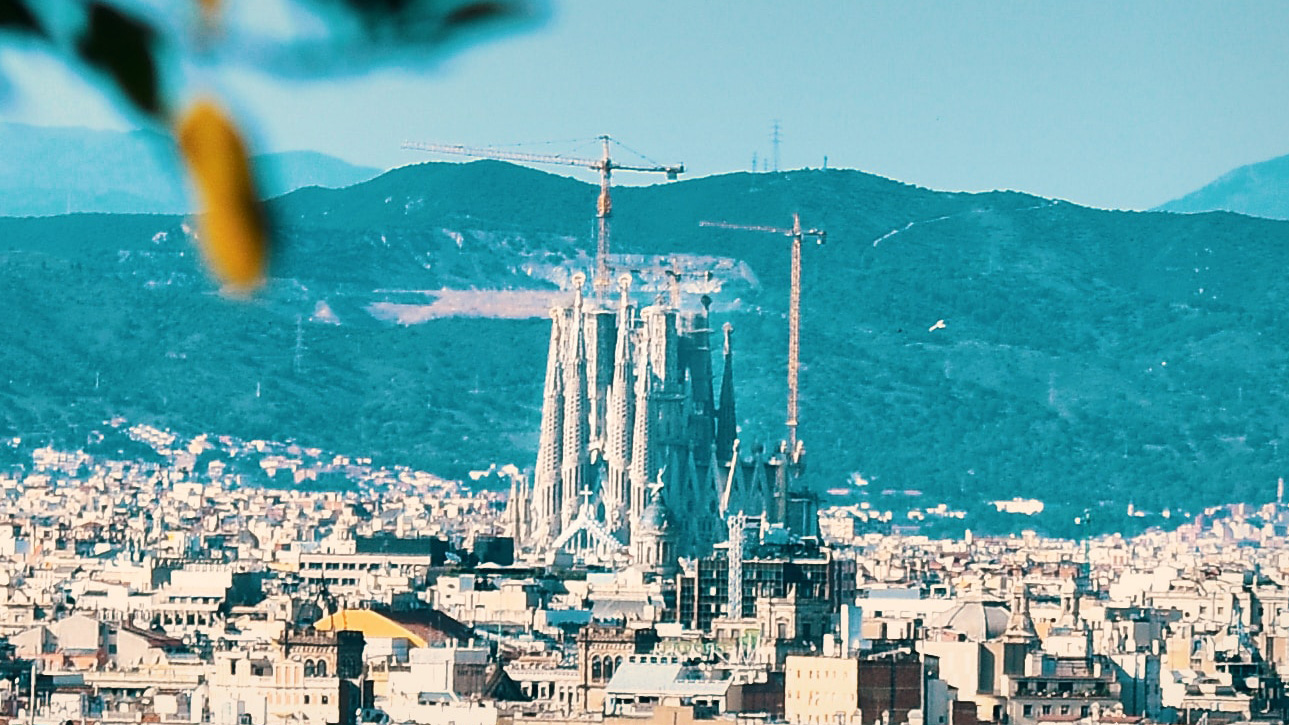
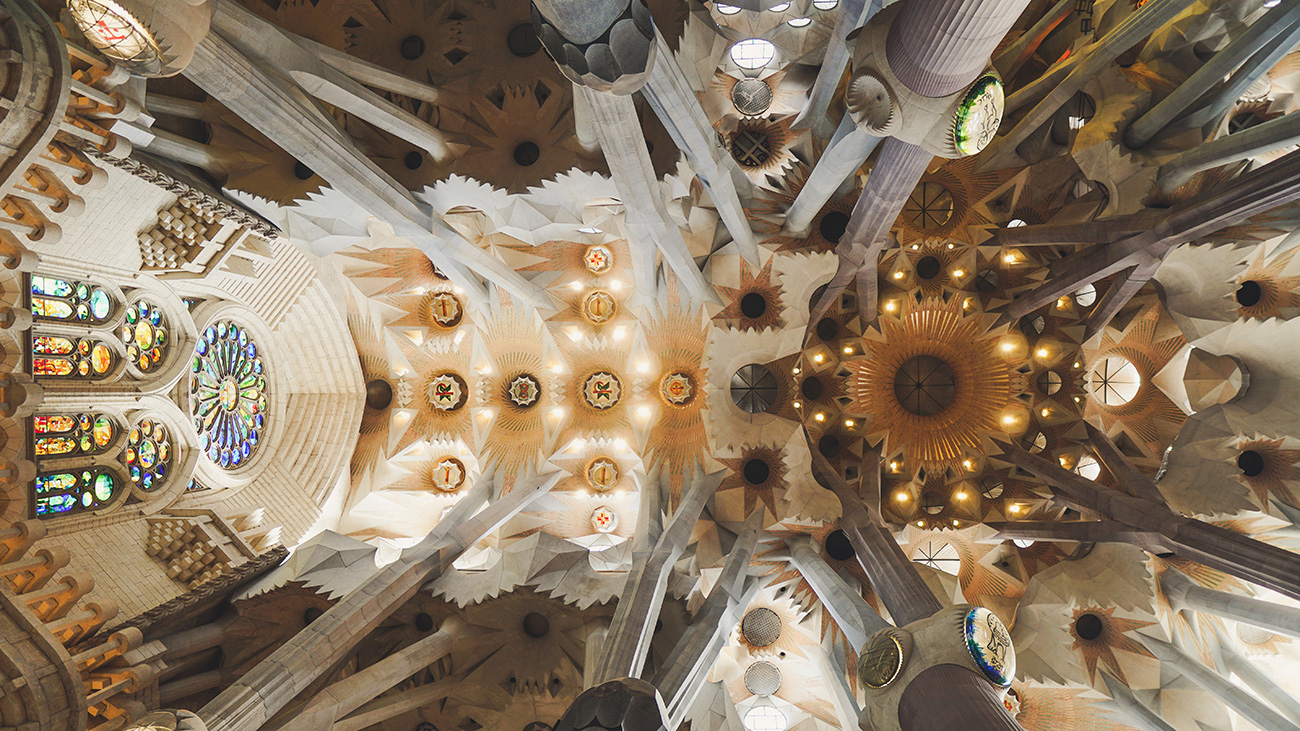
The Sagrada is often cited as the oldest construction project that's still ongoing. Work started on Antoni Gaudí's basilica in 1882, over 130 years later it's still unfinished. It was most recently slated for completion for 2026, although that looks set to be pushed back again. When it's finally completed, the construction will have lasted only a few decades less than the Great Wall of China. Even in its unfinished state, it's a joy to behold thanks to its extravagant mix of architectural styles, almost liquid-like spires, ornate facades, ornamental arches and vivid stained glass.
07. Notre Dame, Paris
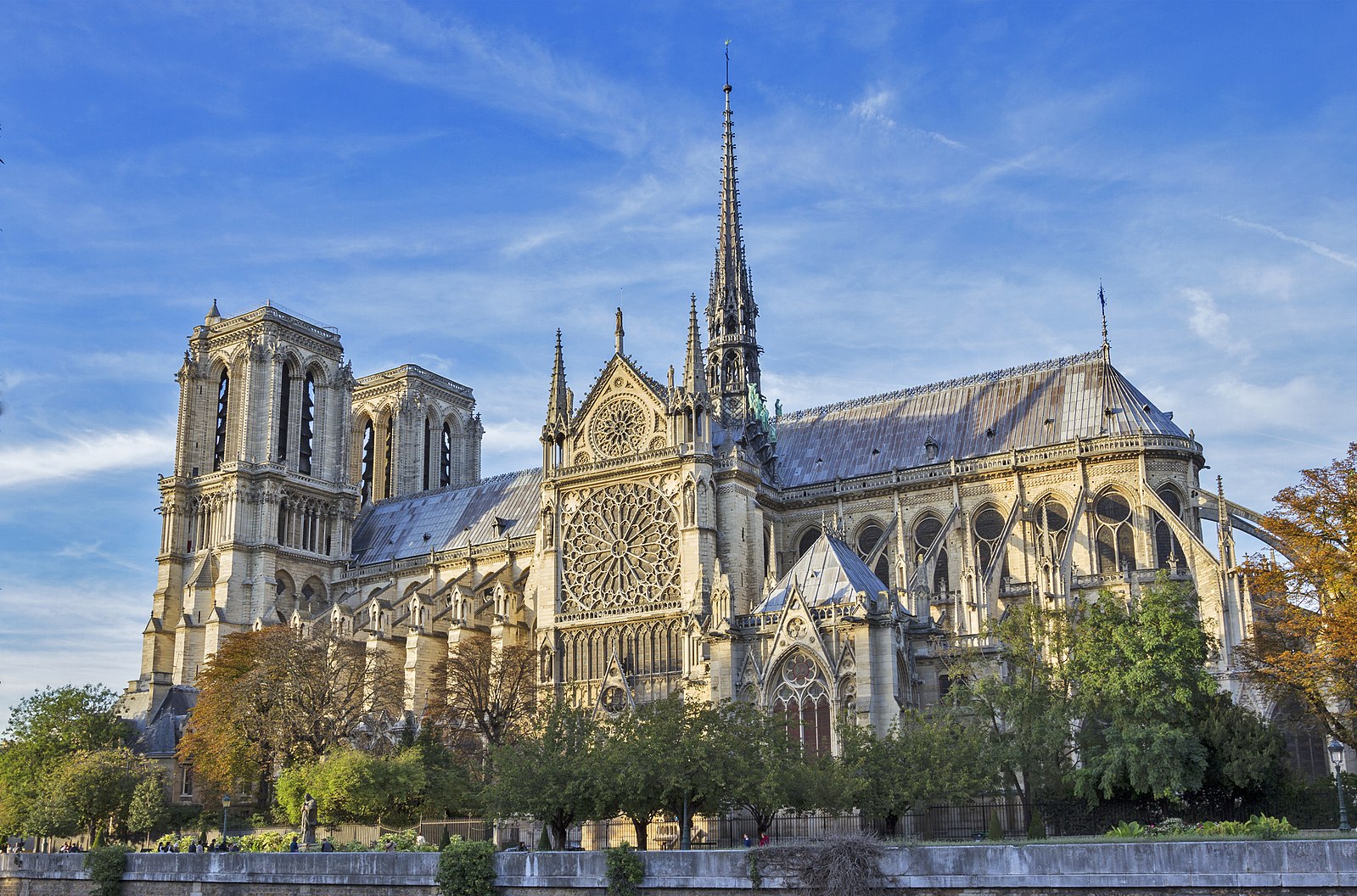
The Notre Dame de Paris has long been one of the world's most celebrated cathedrals, and it's been even more in the spotlight since it was devastated by fire in April 2019. The interior won't be finished in 2024, but the cathedral's facade is expected to be finished in time for The Paris Olympics in July.
Construction on the original structure began in 1160, and the building has since had a peppered history of destruction and reconstruction. The French president Emmanuel Macron has said that the spire will be reconstructed exactly as it was, with up to 1,000 oak trees needed to make that happen.
08. Heydar Aliyev Center, Baku
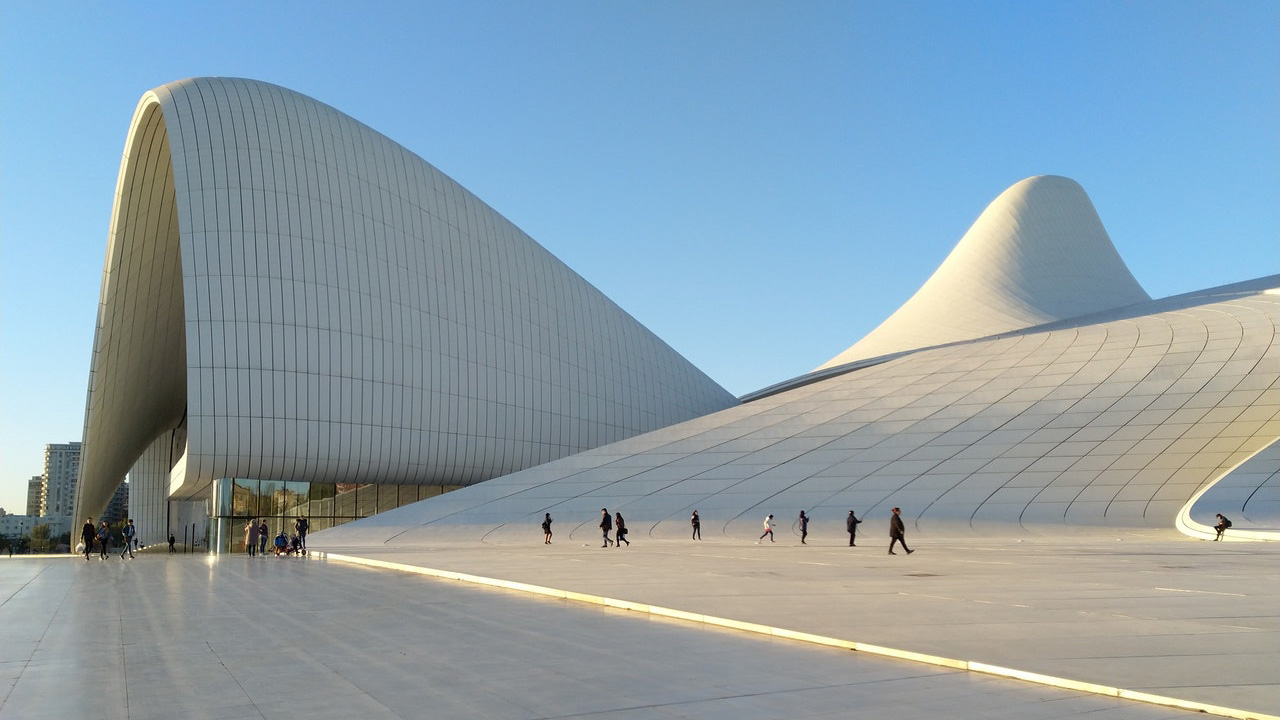
The Heydar Aliyev Center is one of the most famous buildings designed by the celebrated Iraqi-British architect Zaha Hadid. Located in Baku, Azerbaijan, it was completed in 2012 and was acclaimed for its distinctive flowing lines and lack of sharp angles. Zaha Hadid Architects was awarded the commission following a competition in 2007. On the firm's website, it explains the motivation behind the design: "The Center... breaks from the rigid and often monumental Soviet architecture that is so prevalent in Baku, aspiring instead to express the... optimism of a nation that looks to the future."
09. Cathedral of Brasilia, Brasilia
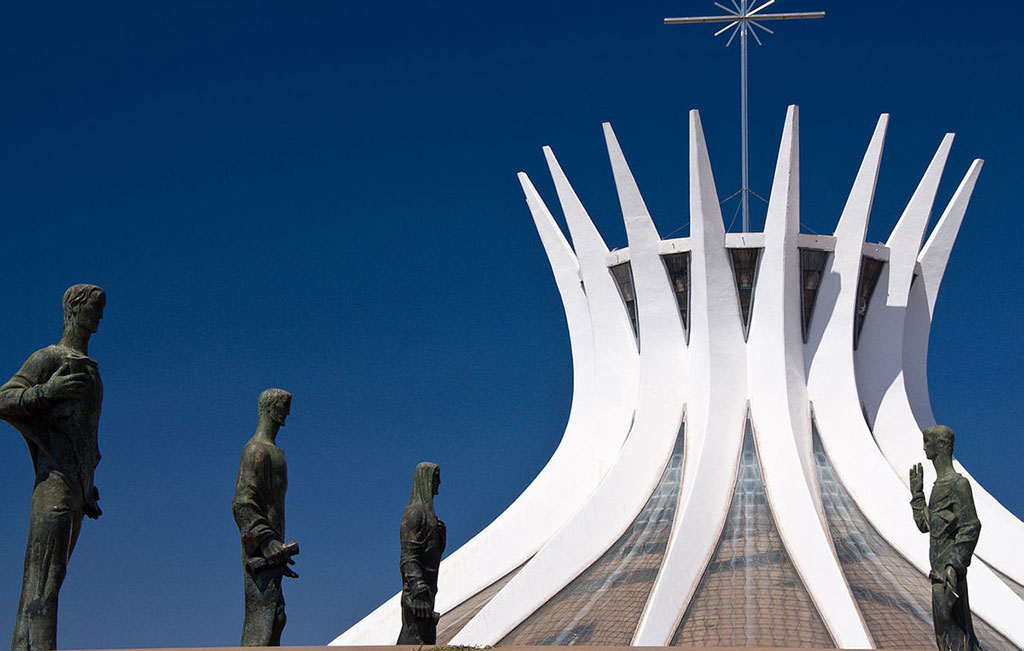
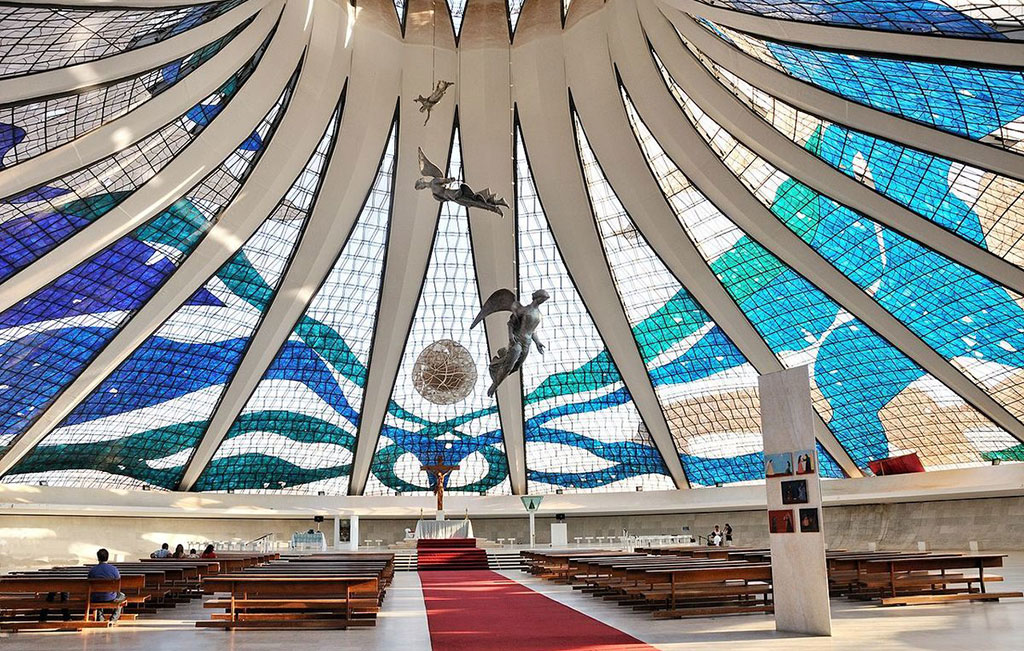
This curved beauty in the Brazilian capital, Brasilia, is just as striking inside as outside with its beautiful crown-like structure and stained glass. It was created between 1958-1970 by Brazil's famed Oscar Niemeyer and Lúcio Costa. Interestingly considering the religious context, both architects were actually communists. Their work rejects the trend for cube-like design that was favoured by their peers and celebrates the majesty of the curve.
10. Harpa Concert Hall, Reykjavik
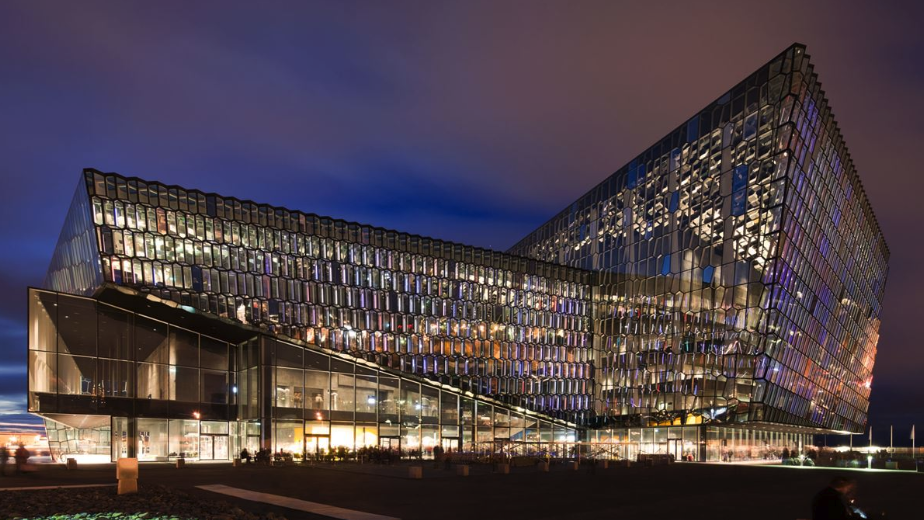
Harpa Concert Hall in Reykjavik was designed by Danish-Icelandic artist Olafur Elíasson alongside Henning Larsen Architects and Batteríið Architects. The kaleidoscope effect of the crystalline shell deploys light and colour in a way that plays with your senses when you enter the building. It looks like a shimmering sculpture that sits on the shoreline connecting the sky and the sea.
11. Milwaukee Art Museum, Wisconsin
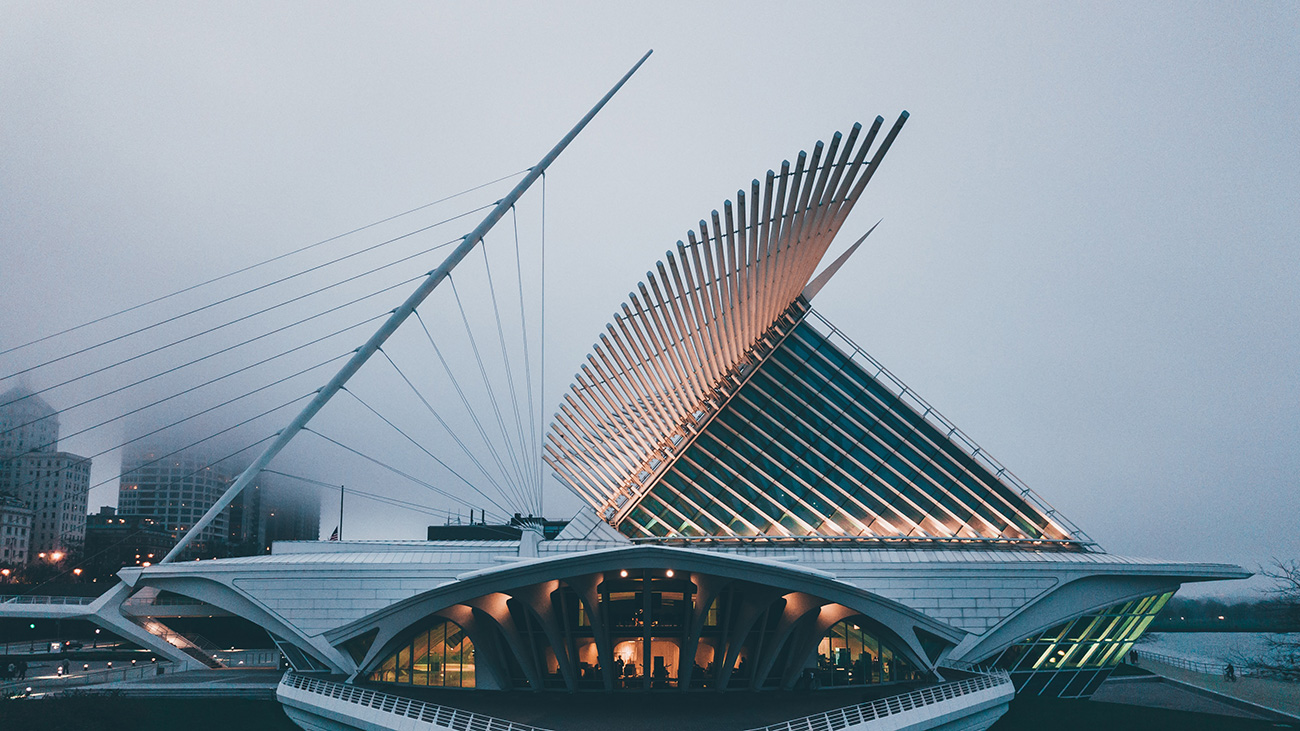

The Milwaukee Art Museum is an architectural landmark that comprises three separate buildings. The War Memorial Center (1957) was designed by Finnish-American architect Eero Saarinen; the Kahler Building (1975) by David Kahler; and the Quadracci Pavilion (2001) by Spanish architect Santiago Calatrava. The latter is an iconic sculptural edition typical of Calatrava's work with flying buttresses, pointed arches and ribbed vaults. Overlooking Lake Michigan, it’s directly connected to Wisconsin Avenue by a cable-stay footbridge. Pedestrians can cross Lincoln Memorial Drive on the bridge and continue into the pavilion, while drivers enter via an underground vaulted parking garage.
12. Forbidden City, Beijing
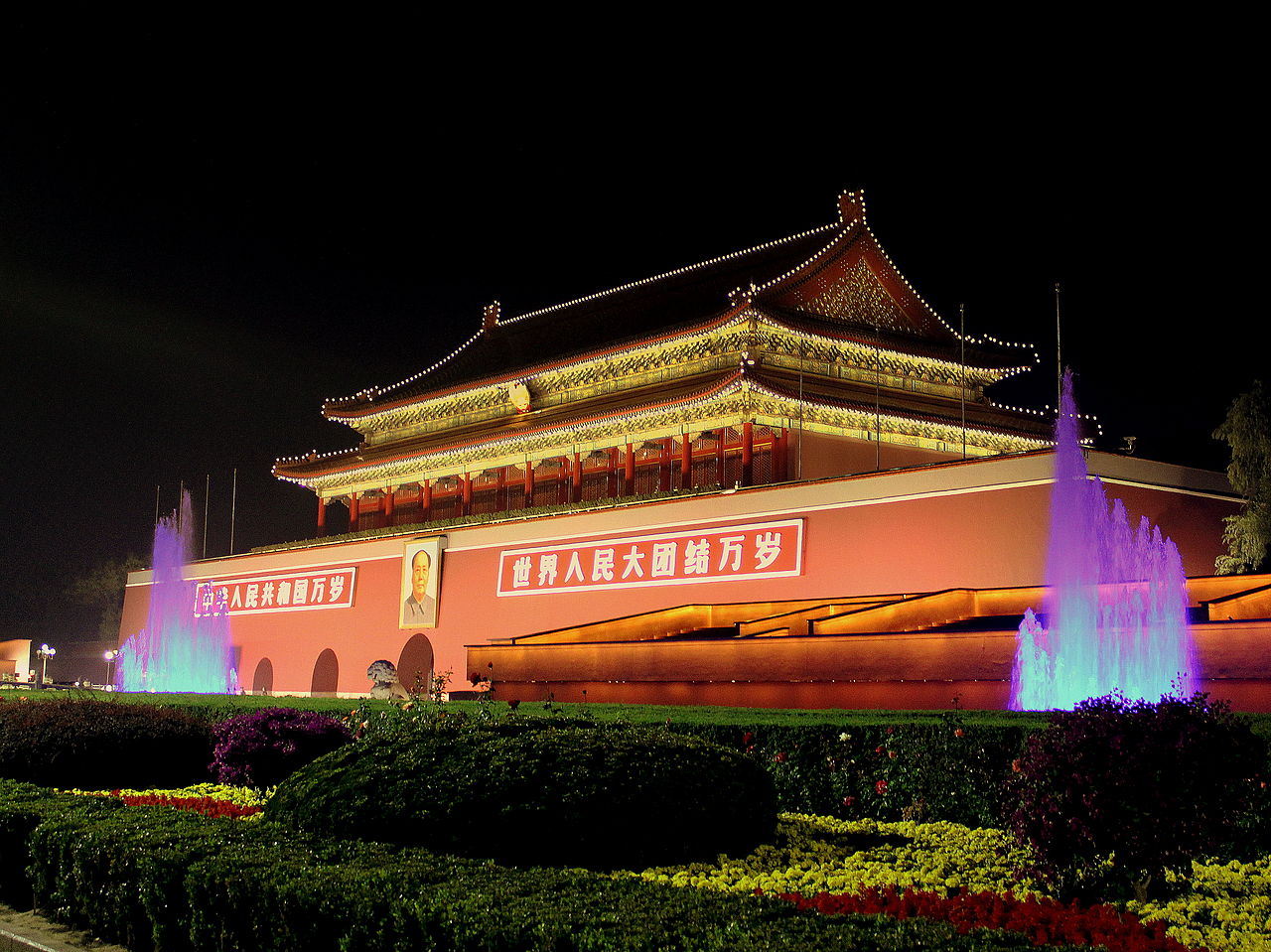
This is more of a series of famous buildings than one – 980, to be precise. Constructed between 1406AD to 1420AD, the Forbidden City was home to emperors from the time of the Ming dynasty to the end of the Qing dynasty, making it the political centre of China for half a millennium. Declared a UNESCO World Heritage Site in 1987, the former imperial palace now houses the Palace Museum. It has the largest collection of preserved ancient wooden structures in the world and sees an average of 16 million visitors in a typical year – that's 40,000 visitors per day.
13. The Dancing House, Prague
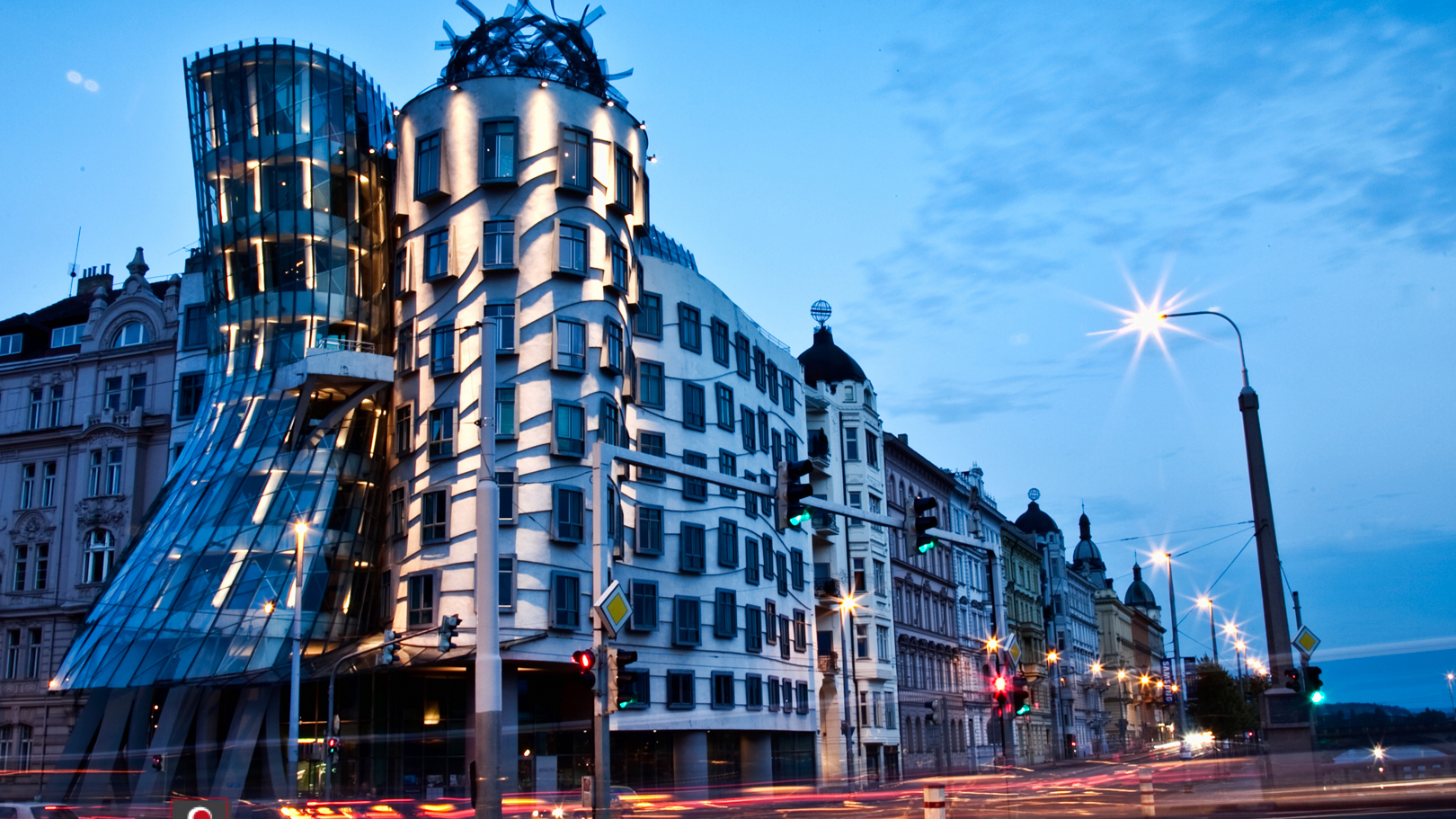
Dubbed The Dancing House, Prague’s Nationale-Nederlanden building was designed by Croatian-Czech architect Vlado Milunić and Canadian-American architect Frank Gehry. The deconstructivist, or new-baroque, architecture forms the unusual dancing shape thanks to 99 concrete panels, each a different shape and dimension. The building's proved so popular that it now features on a gold 2,000 Czech koruna coin issued by the Czech National Bank.
14. Great Mosque of Djenné, Djenné
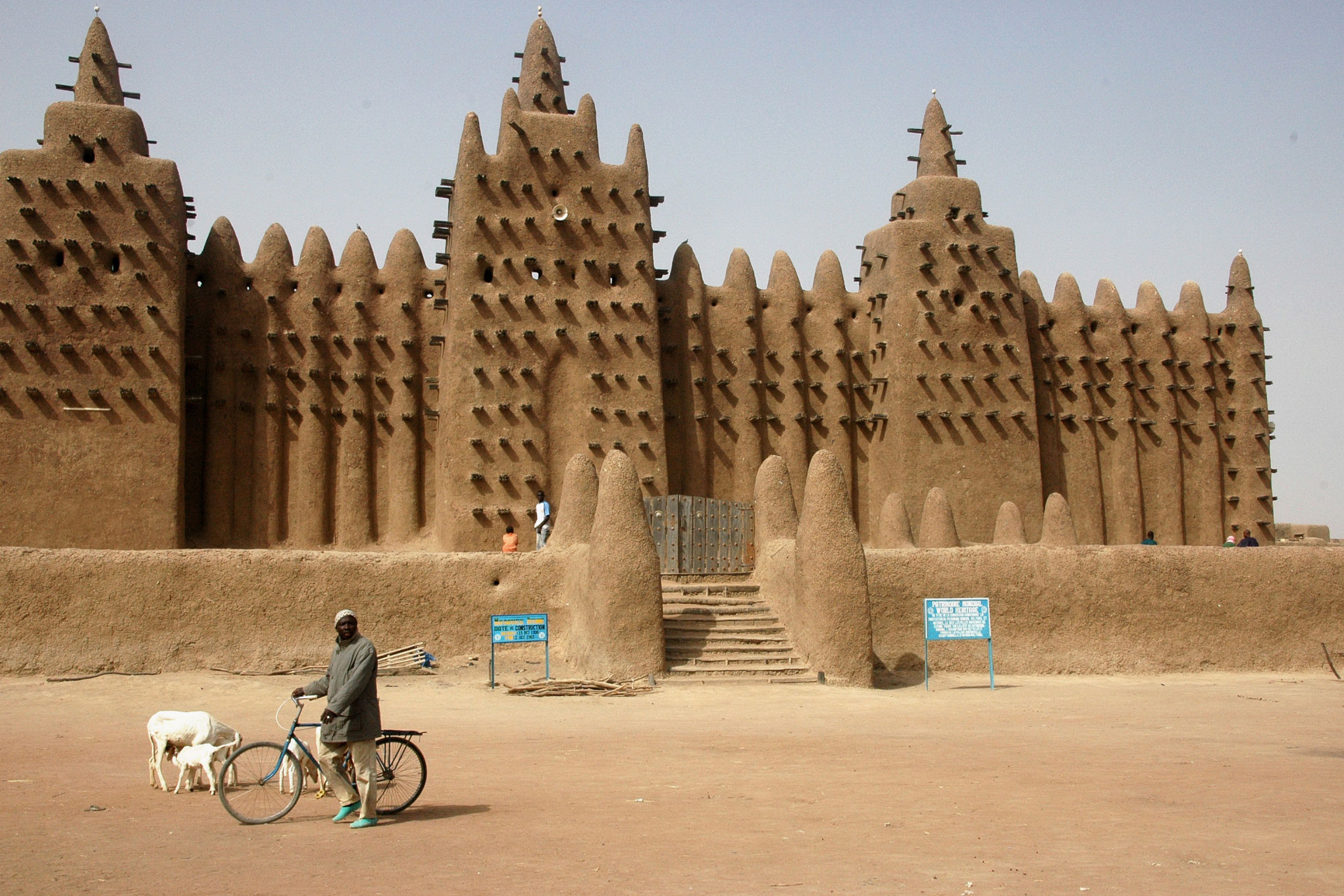
The Great Mosque of Djenné in Mali is one of the most famous buildings in Africa, and it's so important in Mali that it features on the country's coat of arms. It's made of earth bricks that have been dried in the sun, mortar made of sand and a plaster that creates a smooth surface.
It is thought that a mosque has existed on the site since the 1200s. The current structure was rebuilt in 1907, and there's been some debate over whether or not the structure was influenced by French architecture (Mali became independent from France in 1906). Once a year, the people of Djenné have a festival and work together to complete any necessary repairs.
15. Lotus Temple, New Dehli
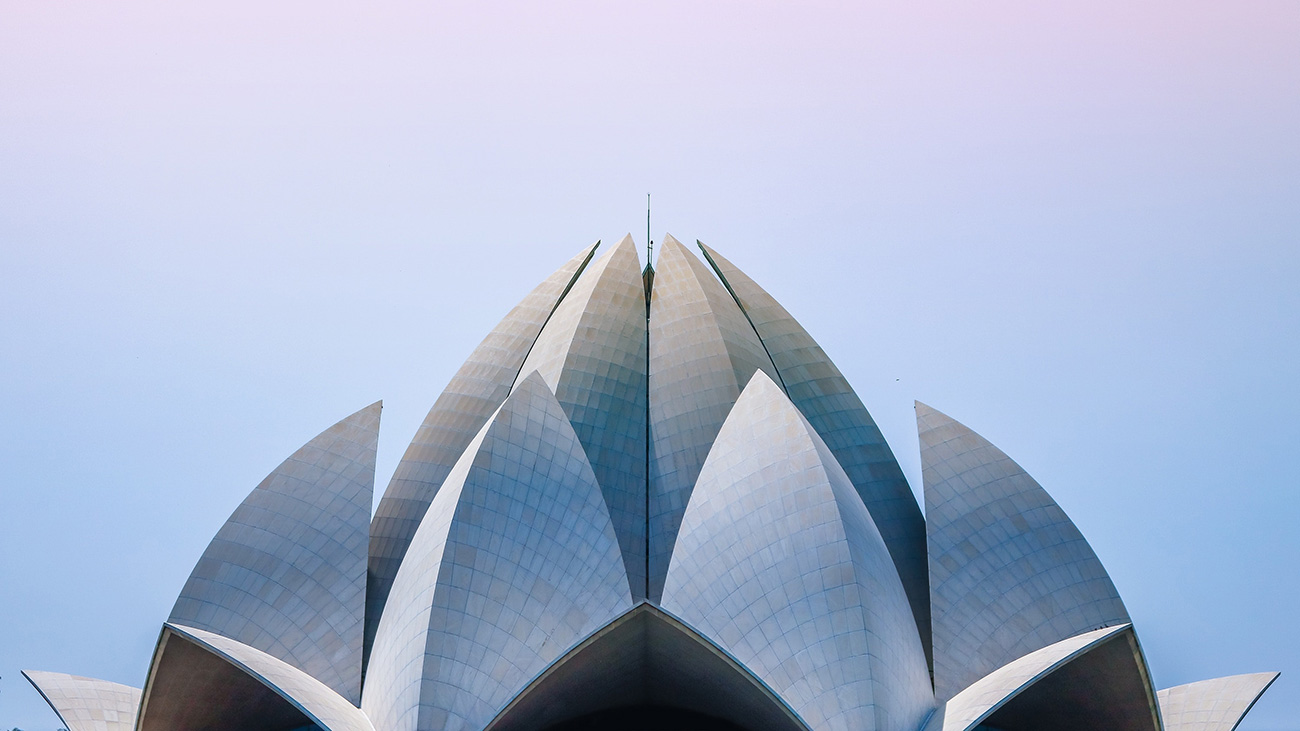
The Lotus Temple is a Bahá'í House of Worship in New Delhi. It comprises 27 structures resembling lotus petals, which open onto a central hall that's around 40m high. The surface of the structure is made of white marble from Mount Pentelicus in Greece, the same marble used to build the Parthenon. The building has nine sides, nine doors, and can accommodate 2,500 people. Since its completion in 1986, it's become one of the most visited buildings in the world, attracting over 100 million people.
16. Himeji Castle, Himeji
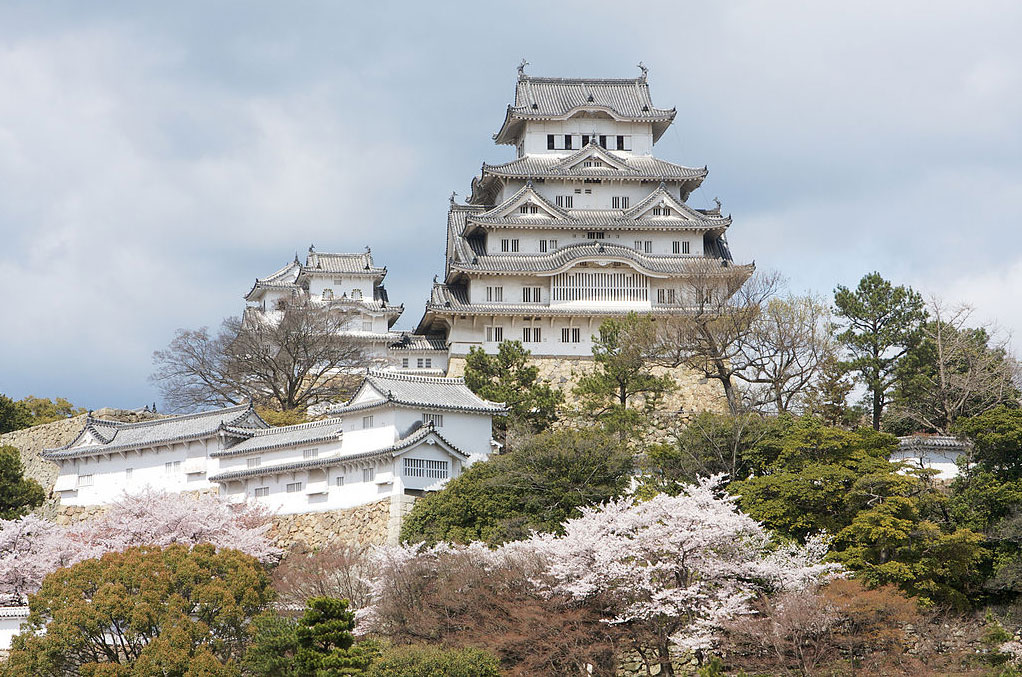
Himeji Castle is a spectacular Japanese castle near Kyoto. It's over 400 years old and in pristine conditions having escaped damage by war or natural disasters. The whole complex is made up of over 80 buildings, which are connected together by gates and winding paths. A marvel to behold, it's often dubbed the White Egret or White Heron Castle because of its white elegant exterior, which is said to resemble a bird taking flight.
17. Cologne Cathedral, Cologne

Cologne Cathedral is a High Gothic five-aisled cathedral. Construction began in 1248 and went on until it was halted in 1473 before the building was complete. Work didn't resume until the 1800s, and the cathedral was finally finished in 1880. Later work follows the original medieval plan faithfully and the building is renowned as a Gothic masterpiece. It also houses many works of art as well as the Shrine of the Three Kings, which is traditionally believed to hold the remains of the biblical Three Kings.
18. Dome of the Rock, Jerusalem
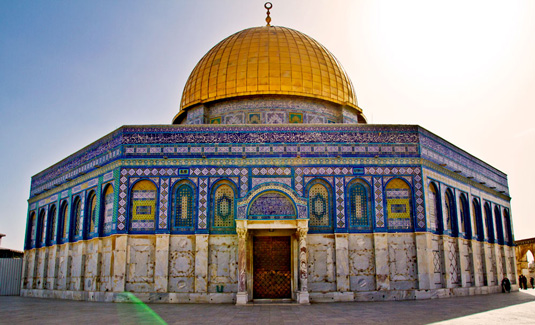
A masterpiece of Islamic architecture, the Dome of the Rock in Jerusalem was built by Caliph Abd al-Malik between 687 and 691. The octagonal plan and the wood rotunda dome are of Byzantine design. The Persian tiles on the exterior were added by Suleiman I in 1561, and the interior decoration was later added to with marble, mosaic and faience. The oldest extant Islamic monument, the Dome of the Rock has served as a model for architecture and other art for more than a millennium.
19. La Pedrera, Barcelona
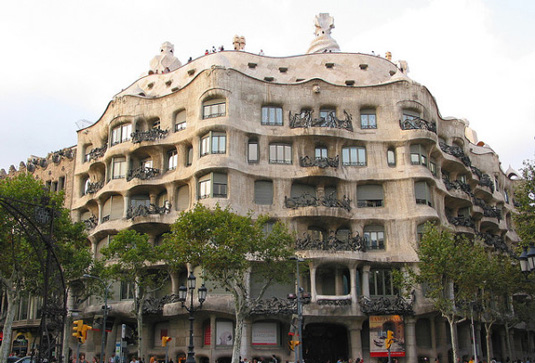
There are several unusual, beautiful buildings from the architect Antoni Gaudí nestled in the urban streets of Barcelona. His unique approach to the Art Nouveau movement generated some of the most creative buildings the world has seen, and La Pedrera is no exception. One of the most imaginative houses in the history of architecture, it's more of a sculpture than a building. The façade is a varied but harmonious mass of undulating stone that, along with its forged iron balconies, explores the irregularities of the natural world. The United Nations Educational, Scientific and Cultural Organization (UNESCO) granted it World Heritage status in 1984.
20. St Paul's Cathedral, London

Designed by English architect Sir Christopher Wren, St Paul's Cathedral is one of London's most iconic buildings. Sitting at the top of Ludgate Hill, the highest point in the City of London, its famous dome is one of the world's largest, measuring nearly 112 metres high.
The original church on the site was founded in 604AD, and work on the present English Baroque church began in the 17th Century as part of a major rebuilding programme after the Great Fire of London. Wren started working on his designs in 1666 and took nine years to complete them. The actual construction took a further 35 years. St Paul's has played an integral part of London life ever since, as a dominant part of the skyline and a centre for tourism, religious worship and anticapitalist protests. See our designer's guide to London for more highlights of the UK capital.
21. Petronas Towers, Kuala Lumpur
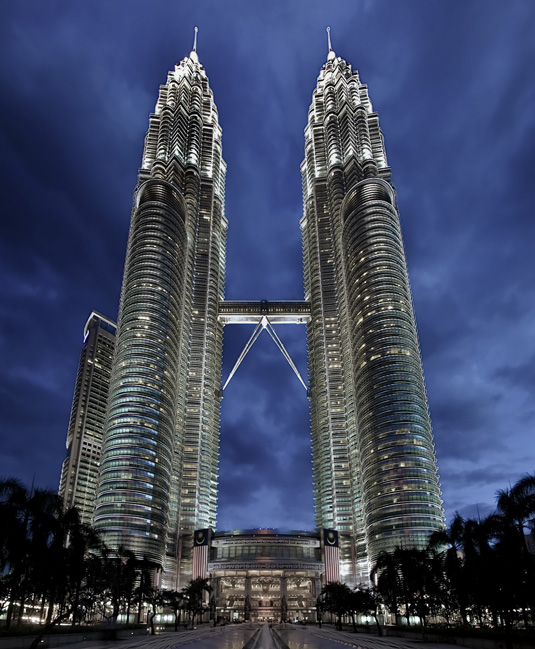
Standing at 451.9 metres tall, these linked twin skyscrapers are an iconic landmark in Kuala Lumpur, Malaysia. The Petronas Towers held the title of tallest building in the world between 1998-2004. The distinctive postmodern style was created by architects Cesar Pelli and Achmad Murdijat, engineer Deejay Cerico and designer Dominic Saibo under the consultancy of JC Guinto. The design of each floor plate was based on the simple Islamic geometric forms of two interlocking squares, creating the shape of an eight-pointed star.
22. The White House, Washington
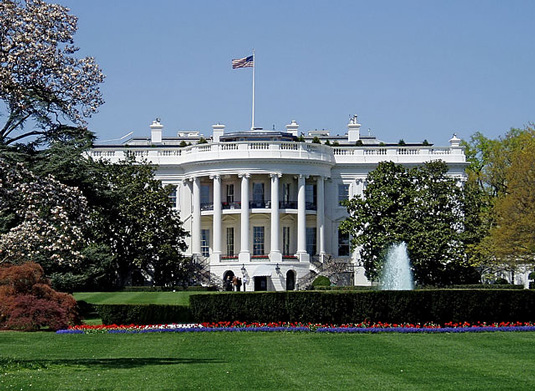
The White House, perhaps the world's most famous political residence, was designed by Irish architect James Hoban. He submitted a plan for the presidential mansion in 1792 and subsequently won the commission to build the White House. Construction began in 1793 and was completed in 1801. The mansion, which has been home to every US leader since the country's second president John Adams, is made from white-painted Aquia sandstone.
23. Leaning Tower of Pisa, Pisa
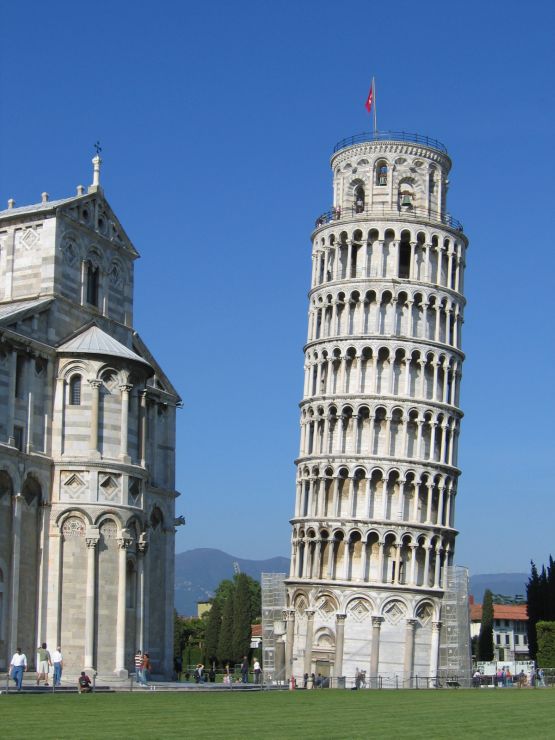
The Leaning Tower of Pisa is one of the most remarkable architectural structures in Europe, best known for its accidental tilt. The tower began to lean during construction because soft ground on one side was unable to properly support the structure's weight. Building work began in 1173 and went on for a staggering 199 years. There's been much controversy as to the true identity of the architect behind it. The design was originally attributed to the artist Bonnano Pisano, but studies have also implicated architect Diotisalvi.
24. The Kaaba, Mecca
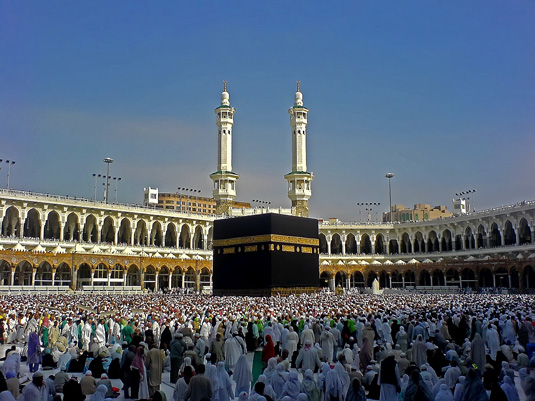
The Kaaba, meaning cube in Arabic, is a square building located in Mecca, Saudi Arabia. An important sacred site in Islam, the Kabba is elegantly draped in a silk and cotton veil. Every year millions of Muslims travel to visit it for the hajj, the Islamic pilgrimage to Mecca. The small square building is about 45 feet high and its walls are a metre wide, with its total size occupying roughly 627 square feet.
25. The Shard, London
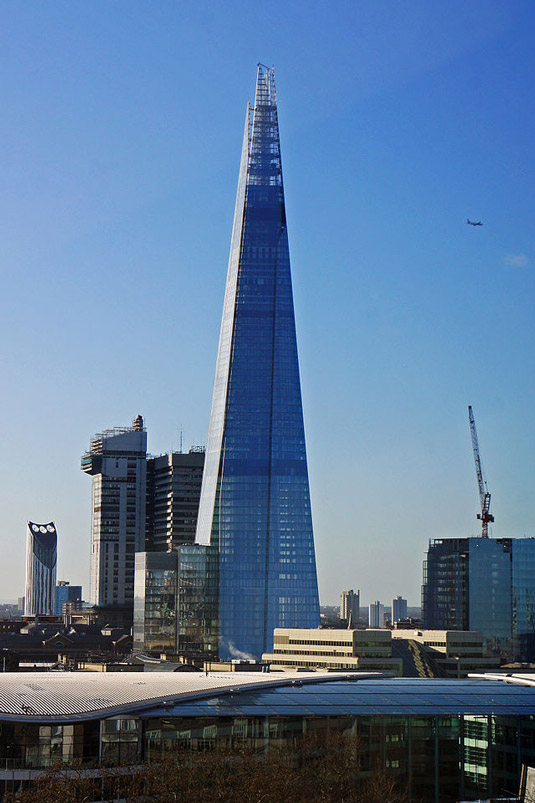
Also referred to as the shard of glass, The Shard is the tallest building in Western Europe and the second tallest free-standing structure in the UK behind
the Arqiva radio and television tower in West Yorkshire. The 95-storey skyscraper was designed by architect Renzo Piano. It's exterior boasts 11,000 glass panels – equivalent in area to eight Wembley football pitches or two-and-a-half Trafalgar Squares.
The building was developed to have multiple uses, being described on the website as a 'vertical city where people can live, work and relax', a motto that was taken on board by a fox, nicknamed Romeo, that was found on the 72nd floor towards the end of construction. Work began in 2009 and finished in 2012.
26. Las Lajas Sanctuary, Nariño
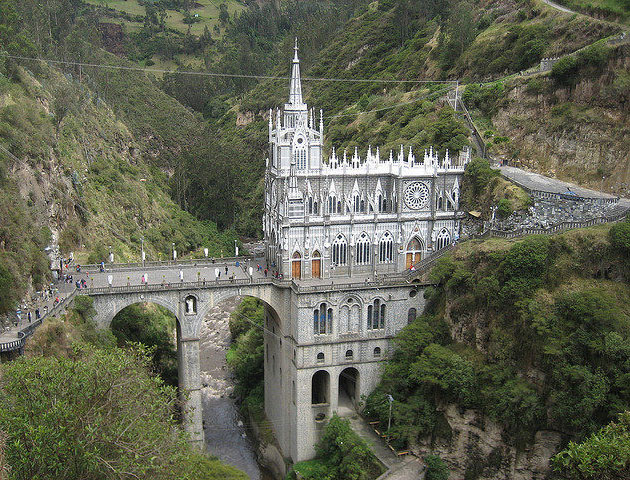
This dramatically situated church in Southern Colombia crosses a canyon. If that isn't impressive, we don't know what is. Why here? Because it's the site where a woman and her daughter reportedly saw an apparition of the Virgin Mary in 1754, after which the previously deaf and mute daughter was able to speak. Since then, various shrines have been built. The current gothic-looking construction was created between 1916-1949.
27. St Basil's Cathedral, Moscow
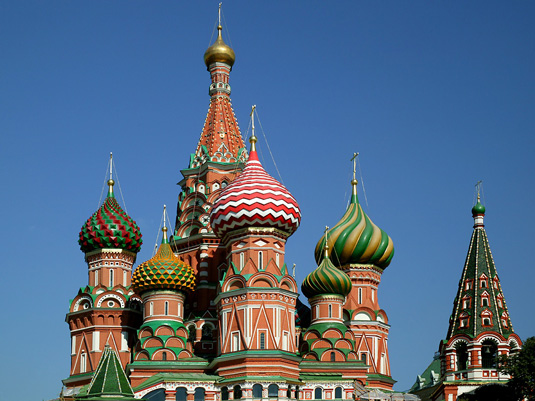
No, not Disneyland. This extravagant candy-coloured cathedral is Moscow's most famous building, and most visited tourist attraction. Shaped to resemble the flame of a bonfire rising into the sky, St Basil's Cathedral is located just outside the Kremlin gates, marking the centre of Moscow. Built between 1555 and 1561, it was erected during the reign of Ivan IV (Ivan the Terrible). Little is known about the building's architect Postnik Yakovlev, but he was clearly a fan of onion domes, sharp spikes and polygonal towers.
28. Empire State Building, New York

We couldn't put together a list of world-famous buildings without including this grand Art Deco skyscraper. Once the tallest building in the world, the Empire State was built in just 410 days, with work starting on St Patrick's Day 1930. The building was designed by William F Lamb of architectural firm Shreve, Lamb and Harmon. It was declared by the American Society of Civil Engineers to be one of the Seven Wonders of the Modern World and is known as an icon of New York City.
29. Lloyd's Building, London

The award-winning Lloyd's building (also known as the Inside-Out building) looks like it belongs in a sci-fi movie rather than London's Lime Street. The futuristic architectural landmark is one of the most recognisable constructions on the London skyline. Architects Roger Stirk Harbour + Partners were behind the innovative design, which put utilitarian elements like water pipes and staircases on the outside. Built between 1978 and 1986, the building also features 12 exterior lifts, which were the first of their kind in the UK.
30. The Colosseum, Rome

This elliptical amphitheatre in the centre of the Italian capital is considered one of the greatest architectural feats of Ancient Rome. The stadium could seat at least 50,000 spectators, mainly for gladiatorial games. Built mainly using concrete and stone between around 72AD and 80AD, the design and shape of the Colosseum has inspired many modern-day stadiums. Today it is one of Rome's most popular tourist attractions, attracting thousands of visitors each year.
31. Taj Mahal, Agra

Recognised as 'the jewel of Muslim art in India', the Taj Mahal was built by the Mughal emperor Shah Jahan. Often mistaken as a palace, this famous landmark was actually built as a tomb for the emperor's wife after she died giving birth to their 14th child. It's regarded as one of the finest examples of Mughal architecture – an amalgamation of Persian, Turkish and Indian styles. Construction began in 1632 and was completed in 1643. The surrounding buildings and gardens took around five more years to finish.
32. Chrysler Building, New York

In the early part of the 20th Century, there was a race to build the tallest building. At the time, this gorgeous Art Deco skyscraper was almost outdone by the Bank of Manhattan, but its spire (which was constructed in secret) enabled it to take the title of 'tallest building in the world' in 1930. That didn't last long though. Less than a year later, the Empire State Building stole its crown. Designed by architect William Van Alen, the skyscraper was commissioned by car manufacturer Walter P Chrysler, hence its name.
33. Sydney Opera House, Sydney
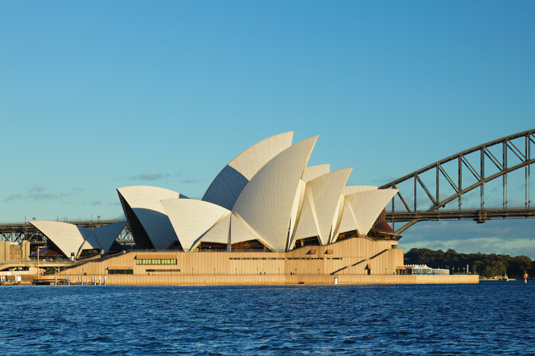
The Sydney Opera House is widely regarded as one of the greatest architectural works of the 20th century. The innovative design came from architect Jørn Utzon, who was relatively unknown until January 29, 1957 when his entry won the international competition to design a national opera house at Bennelong Point, Sydney. The beautiful building comprises three groups of interlocking shells, which cover two main performance halls and a restaurant. A masterpiece of modern architecture, the opera house has become an iconic symbol of both Sydney and Australia as a whole.
34. Space Needle, Seattle
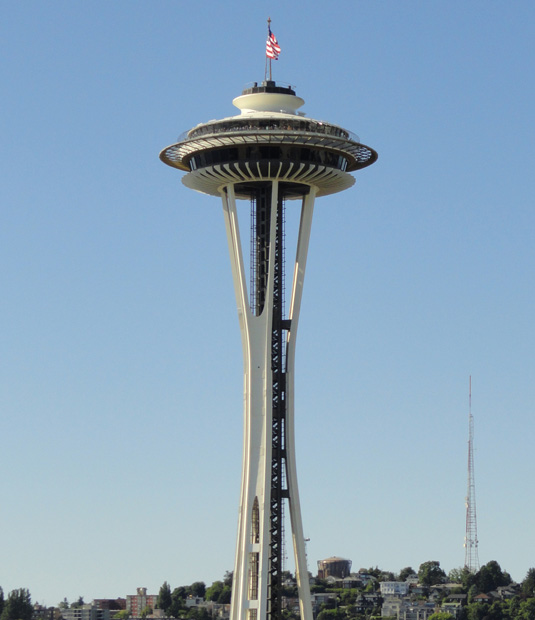
A collaborative effort between architects Edward E Carlson and John Graham, the futuristic Space Needle in Seattle, Washington was built for the 1962 World's fair. The famous landmark stands at 184m high and 42m wide at its widest point. Not only is the architecture a marvel to look at but it's a feat of engineering too, built to survive wind speeds of 200mph and earthquakes of up to 9.1 in magnitude.
35. Hagia Sophia, Istanbul
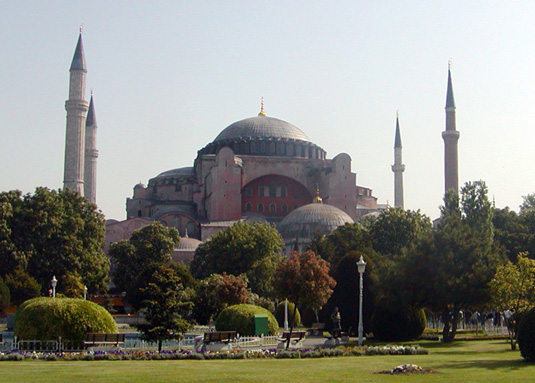
Once a church, later a mosque and now a museum, Hagia Sophia is a perfect example of Byzantine architecture. Located in Istanbul, Turkey, the building was originally constructed between 532AD and 537AD. It's been rebuilt many times since then, due to a range of factors, including earthquakes and being burned down in riots. Despite this, Hagia Sophia is widely recognised as one of the most impressive buildings in the world. It also featured in the opening scenes of the James Bond film, Skyfall.
36. Buckingham Palace, London

Originally known as Buckingham House, the royal palace was bought by George III in 1735 when the mansion was little more than a red brick house. Since then, various architects have worked on the building to make it what it is today, including John Nash and Edmund Blore. The exterior in Bath stone was designed in a Neo-classical French style. The East face of the palace was refaced in Portland stone in 1913. The palace had to undergo extensive work after being bombed no less than nine times during World War II. Despite that, it's still a working royal residence.
37. Fallingwater, Pennsylvania
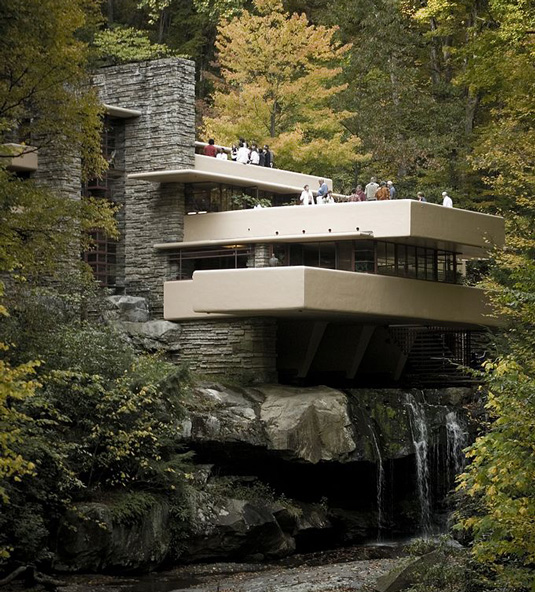
Designed by famous American architect Frank Lloyd Wright in 1934, Fallingwater is possibly the most famous private residence in the world. Why? Well, the unique design makes it look like the house stretches out over a 30ft waterfall, with no solid ground beneath it. This obviously isn't the case, but the innovative design captured the world's attention when it was completed in 1939. It became famous instantly and is now a historic landmark. It's so cool that you can even get a Lego version.
38. Pantheon, Rome

Rome is home to many incredible famous buildings, and the Pantheon is no exception. Like the city itself, it wasn't built in a day. Destroyed then rebuilt twice, the building began as a rectangular structure before evolving into the gorgeous domed building seen today. An inspiration to architects all over the world, the Pantheon's roof remains the world's largest unreinforced concrete dome. There is much debate between historians over which emperor and architects were responsible for the design, but we know that the 'Temple of the Gods' was first built in around 126AD.
39. Chengdu Science Fiction Museum

Chengdu is most famous for pandas, but Zaha Hadid's Chengdu Science Fiction Museum firmly puts the huge Chinese city on the architectural map too. It's described as a “star cloud dispersing energy fields”, and seems to hover over Jingrong Lake like a spaceship. Hadid's signature curves are present, along with environmental credentials such as natural ventilation and solar power.
40. Burj Khalifa, Dubai

Last on our list – but by no means the least – is the world's tallest building (at least until the Jeddah Tower is completed). The Burj Khalifa, the centrepiece of downtown Dubai, stands at an incredible 828.9 metres high. Construction on the 160-floor building began in 2004, and its doors opened six years later in 2010. It was designed by the Chicago office of American architectural and engineering firm Skidmore, Owings and Merril LLP. A Y-shaped tripartite floor was used to optimise residential and hotel space, while a buttressed central core and wings support the stunning height of the building.
41. Sistine Chapel, Vatican City
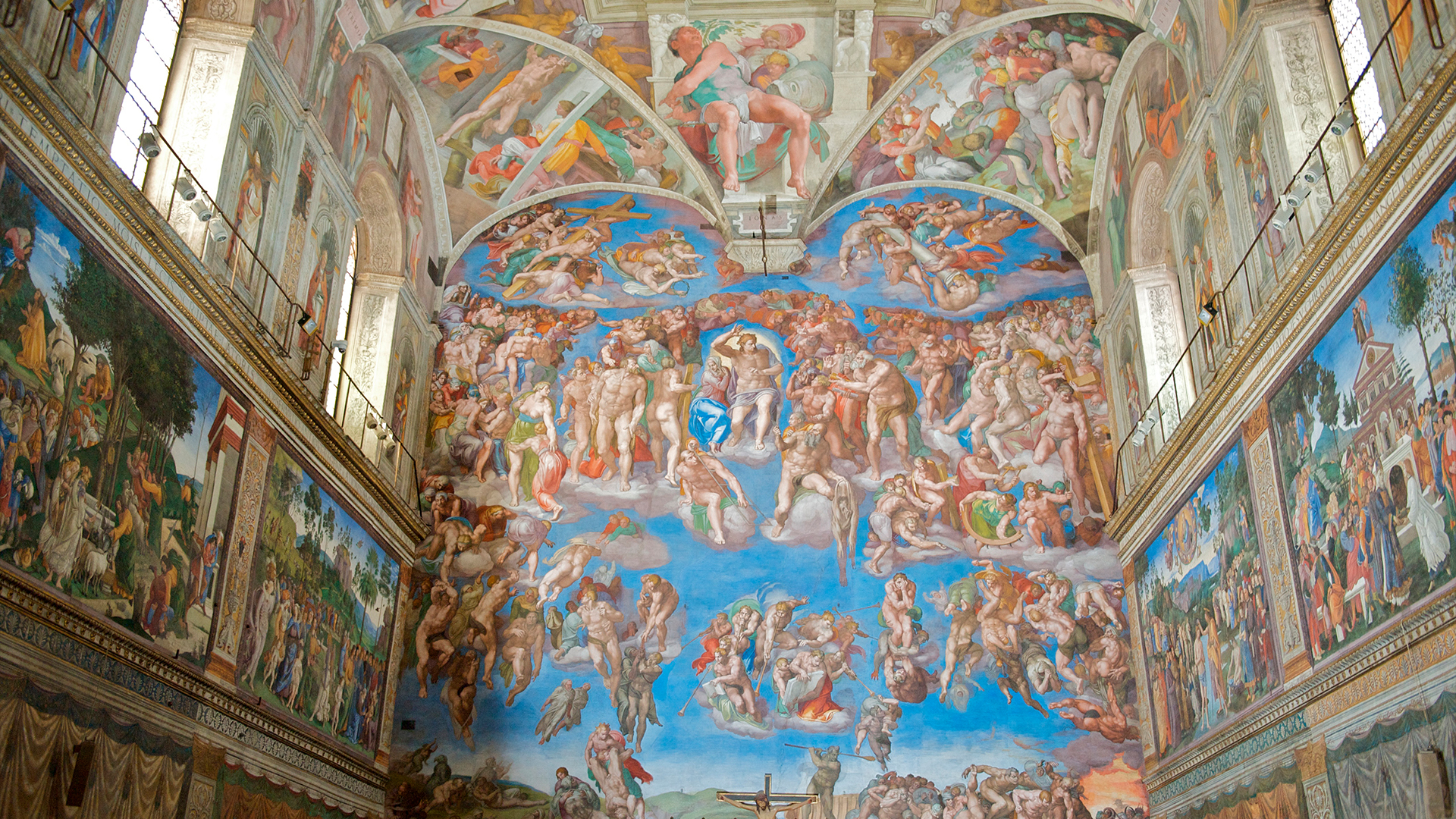
While it may look unassuming from the outside, the beauty of the Vatican's iconic Sistine Chapel lies within its walls. Featuring Michelangelo’s iconic ceiling frescoes, the chapel is home to some of the most famous artwork in history, giving onlookers an authentic Italian Renaissance experience.
With legendary frescos dating back to the 1400's, this stunning building is a must see for art history fans. The Sistine Chapel is still in use today as the Pope's private chapel. It hosts principal papal ceremonies and is used by the Sacred College of Cardinals to elect a new Pope.
For more inspiration, see our pick of the best online art galleries to visit from home.

Thank you for reading 5 articles this month* Join now for unlimited access
Enjoy your first month for just £1 / $1 / €1
*Read 5 free articles per month without a subscription

Join now for unlimited access
Try first month for just £1 / $1 / €1

Georgia has worked on Creative Bloq since 2018, and has been the site's Editor since 2023. With a specialism in branding and design, Georgia is also Programme Director of CB's award scheme – the Brand Impact Awards. As well as immersing herself with the industry through attending events like Adobe Max and the D&AD Awards and steering the site's content streams, Georgia has an eye on new commercial opportunities and ensuring they reflect the needs and interests of creatives.
